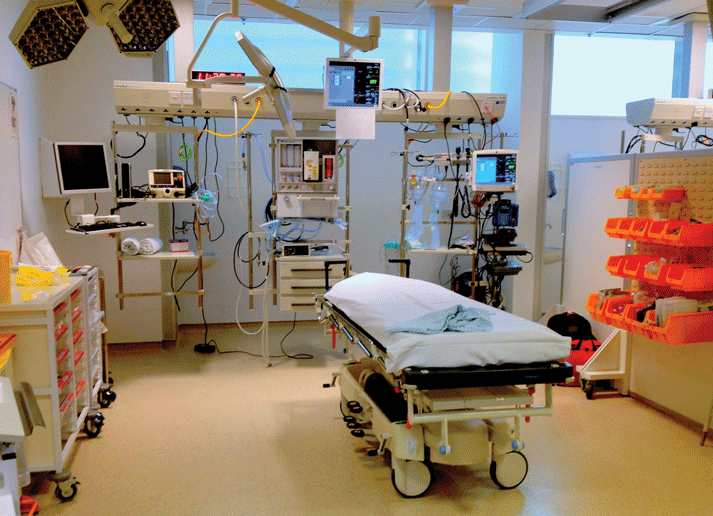Wasting Time
Kevin Bennett, MS III - Florida International University Herbert Wertheim College of Medicine
EMRA MSC Southeast 2 Regional Representative, 2021-2022
Speed. Decisiveness. Time. Certainly the currencies of EM, these principle measures of quality keep an ED flowing, save lives in the process, and mitigate real emergencies. However, considering that most of what comes through the ED is not an emergency and may be an even more insidious disease process, how do we balance the need for speed with the medical inquisition required to send a well-patient home with confidence or not lead our hospital friends down a rabbit-hole with a new admit? This is truly a skill learned with time, trial-and-error, and intensive residency training that we just don’t have in medical school, and to that end we are not expected to know how much or little attention is needed with every patient every time and are praised for even giving a reasonable differential diagnosis. There is no room for perfection in a medical student’s arsenal, and I would like to give a short anecdote of when curiosity and perceived time-wasting saved a patient from pain, misdiagnosis, and erectile dysfunction.
Cutting a slice of any given ED on any given shift never fails to reveal quite a cross-section of life. Especially in an urban academic setting, you can expect to see patients of all races, religions, languages, education, and healthcare literacy. Luckily, this diversity was fresh on my mind and on full display as I rounded on a few patients with my attending and approached the room of patient: We will call him Mark.
My attending paused in front of the room, “Okay, this guy just came in - he’ll probably be a pretty good case for you. He’s a uh…” he answers his phone, “...okay, Kev, I have to go catch the cardiology fellow, just see this guy for me real quick. Sudden back pain, history of lumbar stenosis, numbness and weakness down the leg, may need neurosurgery evaluation. Let me know what you think!”
He headed off in a flash leaving me with a well-rehearsed checklist for evaluating back pain in my head. I walked into the room and introduced myself to the 59-year-old plumber, whom I will continue to call Mark, with a past medical history of diabetes, hypertension, hyperlipidemia, 30-pack-year smoking, and lumbar stenosis diagnosed by PM&R 6 months prior on MRI. The pain became severe 2 days ago and was actually more localized to his right buttocks and inner thigh, but he wasn’t worried enough to come to the ED until earlier today when his leg “gave out”.
“So you just couldn’t feel your leg…” I asked, “...and you felt pain, numbness, weakness?”
“Yes sir!” Mark responded enthusiastically, “All the above.”
“So Mark just to get it straight, you’ve had some nagging back pain for a few months now, mainly on the right, then a few days ago you noticed significantly increased pain in the right…” I motion with my hands because I never know how to say this well “…butt area, that also went into your inner thigh. Then earlier today you felt the pain get much worse after not doing too much, not exerting yourself, and then it became numb, weak, and you fell down.”
“Yes, yes, that’s it.”
I made sure to cover my OPQRST, ask a full review of systems, and perform a focused physical exam - tenderness, sensation, range of motion, walking the patient - which failed to reproduce the pain, but I was relatively certain we weren’t dealing with an emergency so I took my differential diagnosis and headed back to the computer to write my note. However, on further chart review, I saw that Mark had resulted a hemoglobin A1C of 11.2 from a primary care visit 2 years ago. I begrudgingly walked back to his room and into what was sure to be a red herring and an unnecessary motivational interviewing session.
“Mr. Mark, I just wanted to ask if you’ve been taking your diabetes medicines.”
He chuckled, “No, not really.”
“What about your blood pressure or cholesterol medicines?”
“I take those when…you know, when I feel it. Like when I feel kind of off.”
“And you’re still smoking?”
“No sir!” He said proudly, “I quit three weeks ago!”
I smiled with a chuckle and left him with “Congratulations” as I turned to leave the room. In that moment, I thought about my interaction with him and how, while he was a pleasant and nice man, he was headed down a path way worse than a possible disc herniation. I mean, didn’t he know that his diabetes was completely out of control? Didn’t he know he needed to take his blood-pressure and cholesterol medications every day? Didn’t he know that smoking was going to destroy his lungs and arteries? Then it hit me. Like a distant echo of OnlineMedEd, I suddenly put the pieces together. A diagnosis I wouldn’t have thought about unless I…well, unless I thought about the patient I was treating. He didn’t know he was supposed to follow-up multiple times a year on his diabetes. He didn’t know he was supposed to take his medicines every day. He didn’t know that smoking was going to cause so many health problems. He was probably “told” many times, but I was also “told” many times about the importance of the rate limiting step of glycolysis and I seem to remember that as well as this guy remembered to take his lisinopril. The diagnosis was staring me in the face and I just needed to remember my humanity to see it.
I caught the door and popped my head back in, “Hey Mr. Mark, has anything else been bothering you lately, or over the past couple months or years?”
“No not really, just the odd ache or pain.”
I did the classic look-down-at-your-papers-to-stall-for-time, “Hmm…okay…okay…”
“Well actually, you know I’ve got the pins and needles in my feet.”
“Oh yeah…” I said encouragingly, taking a seat next to him, “...from the diabetes, right? I know that’s got to be painful but that’s what the medicines are for, and, you know, why we have to keep hounding you about them.”
“No, I know, I know…I guess I just don’t like taking pills. What I wanted to say, though, is that my hands and my feet are icy cold. Feel!”
I took his hands and was shocked by the coolness of his skin. Then I felt his feet and compared it to his thighs and noticed a marked difference in temperature. “Mr. Mark…” I began as I felt for his DP and PT pulses, “...about the pain again. You said it didn’t hurt worse when you’re walking around at work, but does it hurt if you walk for a long time? Like if you went for a long walk with your wife would the same pain start to ache?”
“Yes! Exactly! That’s it!” He then began to motion along his inner thigh, tracing with astonishing accuracy the likely path of his femoral artery “Ooo, and right from here up into my groin and hip.” A few seconds had gone by at this point and his DP pulse on the right was almost absent compared to the left. I was celebrating the impending diagnosis in my head as I geared up to ask him the final clinch question.
“Mr. Mark, this is an awkward question, but have you been having any problems with erections? Like is it difficult to have sex, and does your erection kind of…” I do the limp wrist hand-motion. In hindsight the pantomime was unnecessary, but it is certainly effective in communicating to men across all languages and backgrounds.
He sat up in the bed and leaned over to me, “Can I tell you something, doc? I haven’t been able to have sex in over a year. I’ve tried the medicines but they don’t really work.”
I looked Mark in the eye and asked “Has anyone ever told you that you have peripheral artery disease?”
Mark’s work-up was then quickly expedited with a vascular surgery consult, new medications, and a brand-spanking new diagnosis of Leriche syndrome courtesy of a third-year medical student. Should I have thought about PAD as a possibility going into the room the first time? Yes. Did I? No. The lesson I learned here and the lesson that I hope to impart to everyone is that we are students and we should not assume that a diagnosis is off the table. If we don’t know, then we don’t know! That should be the mantra of every student. Assuming implies that we have enough training to play the odds and rule things out based on probability, and, looking back on it, the probability that an uncontrolled diabetic, with poor medication adherence, and lack of follow-up with primary care would possibly have PAD on the list of differentials for buttock and leg pain is pretty high. Remember to stay inquisitive, remember that you only “know” or “don’t know”, and remember what Osler said, “Listen to your patient, they are telling you the diagnosis!”







